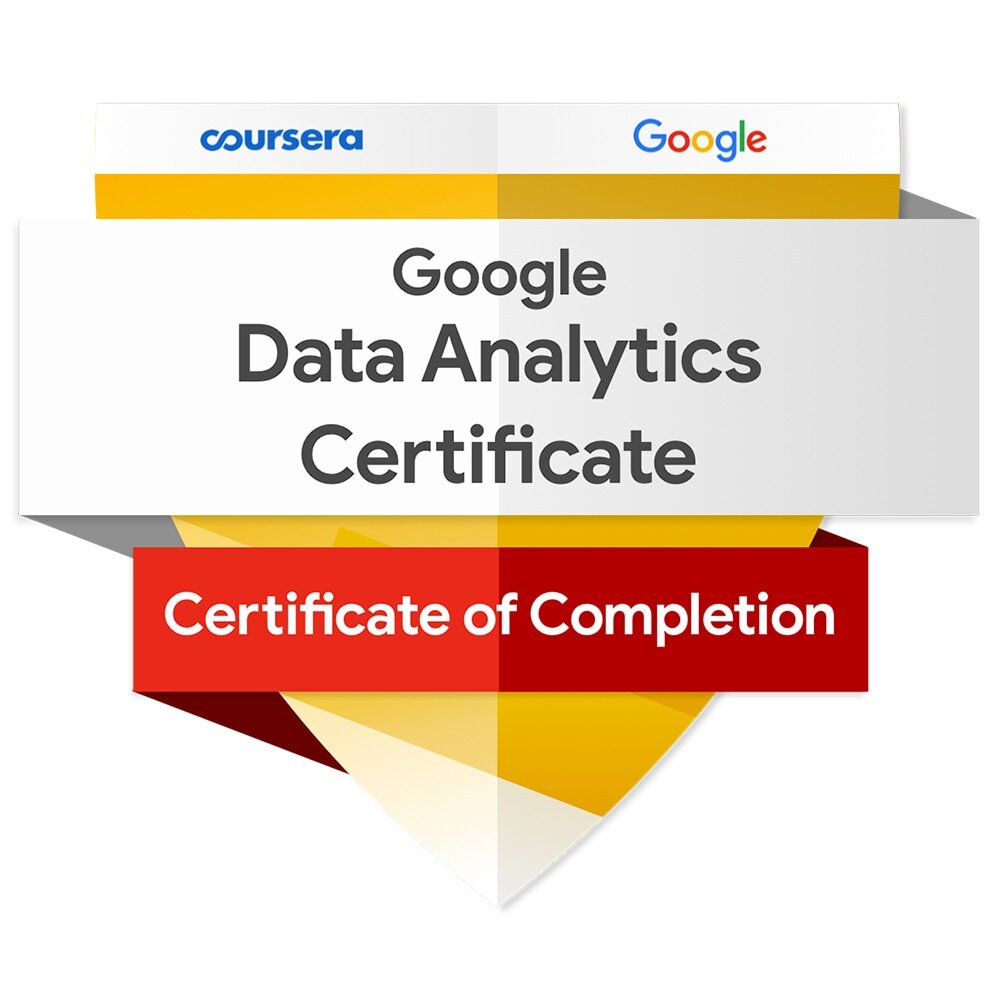
Google Data Analytics Professional Certification Learning Journal
The Google Data Analytics Professional Certification is a 6-month intensive training program. Weekly course objectives, quizzes, exams, and a capstone project will prepare me with the skills to land a junior-level data analyst job. I’ll be updating this page with learnings from each of the 8 courses.
Course 1:
Foundations: Data, Data, Everywhere
Overview: This course serves as a foundation for the rest of the program. It deals with the data analysis process, tools, and key concepts.
Progress: Complete | (4/18/21)
Course 2:
Asking Questions to Make Data-Driven Decisions
Overview: This course teaches how to ask effective questions when beginning a new data analysis project. It will also build on the introductory modules for SQL and spreadsheet software.
Progress: Complete | (4/21/21)
Course 3:
Preparing Data for Exploration
Overview: Course 3 deals with data collection methods, data types, data ethics, security, and relational databases. We used SQL to query and manipulate data in a relational database.
Progress: Complete | (4/28/21)
Course 4:
Cleaning Data
This module was all about identifying dirty data and cleaning methods. We used spreadsheet functions like conditional formatting and pivot tables to identify dirty data. We also learned Excel functions for trimming, splitting, concatenating, and filtering data.
This module took a deeper dive into SQL functions for data cleaning. Some of the functions we used to clean data were the CONCAT, CAST, and COALESCE functions.
Lastly, we covered documentation of the cleaning process. We discussed the importance of changelogs and version control features.
Progress: Complete | (5/4/21)
Course 5:
Analyze Data to Answer Questions
This module focuses on the analysis process after thorough data cleaning. It encompasses organization, filtering, sorting, data validation, and formatting in spreadsheets and SQL.
The module pays special attention to SQL concepts like JOINS, UNIONS, subqueries, and temporary tables.
Progress: Complete | (5/11/21)
Course 6:
Share Data Through the Art of Visualization
This module is devoted to the Share phase of the data analysis process. The four courses encompass the four keys to a successful data visualization, information, story, goal, and visual form.
We discussed the importance of finding the best visualization to illustrate the story the data is telling.
The module covered Tableau and how it can be used for Dashboards and visualizations.
Lastly, the module outlined the strategies for successful presentations. We learned best practices, design guidelines, and public speaking tips on how to successfully communicate findings to stakeholders.
Progress: Complete | (5/15/21)
Course 7:
Programming in R
This module covered the basics of using the open-source programming language R for data analysis and visualizations.
We used R studio to manipulate data using the “tinyverse” packages in R. Some of the tools we used were ggplot2, tidyr, tibble, dplyr, and readr.
Using these tools, we then exported results in R Markdown.
Progress: Complete | (5/18/21)
Course 8:
Capstone Project
This module discussed the importance of completing case studies for professional development.
During this module, I completed a case study analyzing customer trends for a bicycle-sharing company.
The case study explained the behavioral differences between subscribers and one-time customers to create a marketing campaign. This campaign will then be used to increase the proportion of one-time customers signing up for the company’s membership program.
Progress: Complete | (5/21/21)








